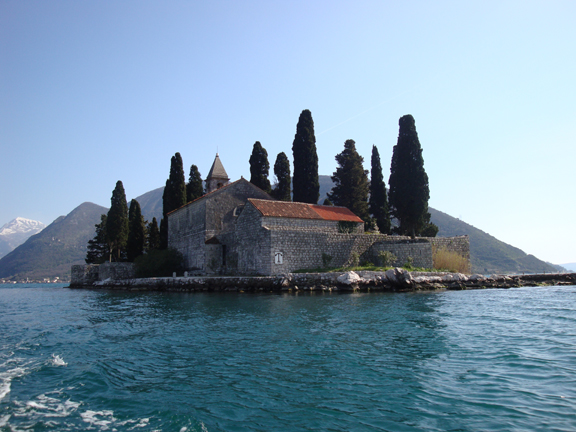
Kotor Bay, Image credit: Peter Krahenbuhl
If destinations were judged by their diversity of natural beauty, then Montenegro—one of the newest officially independent countries in the world—would undoubtedly be a global leader. Of course, diversity of natural beauty doesn’t necessarily lead to a sustainable tourism destination. Destination stewardship requires a sense of duty, commitment and action related to tangible benefits to the environment and its people, all of which are abundant in Montenegro. And it is this connection between the country’s natural beauty and its conscious effort to preserve these very natural and human treasures, that makes Montenegro one of my all time favorite destinations.

Image credit: operationworld.org
History
Located along the Adriatic Sea, just barely touching Croatia and almost a stone’s throw from Dubrovnik, Montenegro (also one of the smallest non-island countries in the world), is also pinned between Bosnia/Herzegovina and Serbia in the north, and Albania to the south. Given this geography, Montenegro has been through a recent period of turbulent times, including regional war and air strikes, refugee inundation from four countries, hyperinflation to the point where one paid for their coffee when ordering it because it would cost more 30 minutes later, and very recent independence as a sovereign nation. Given all of this, it is amazing what they have accomplished in using tourism as an anchor for sustainable development.
In the short few years since gaining independence from Serbia in 2006, Montenegro has been transforming itself into an independent sovereign state with a heavy emphasis on sustainable tourism. But it goes back much further than that. Ever since King Nikola proclaimed the first nature reserve in Montenegro in 1878 the foundation was laid for a stewardship approach to managing Montenegro’s natural assets that became more than symbolic, even throughout the country’s border changes, controlling regimes, struggle for and eventual successful independence. Even its name, Montenegro, is nature based, translating to ‘Black Mountain.

Image Credit: Peter Krahenbuhl
Sustainable Tourism Development
In fact, Parliamentary declaration to become the world’s first “Ecological State” in 1991 set the stage for a governmental commitment to nature conservation as a source of its citizens’ well-being. At the same time, Montenegro adopted the National Sustainable Development Strategy to ensure the necessary balance in planning and carrying out of activities related to economic development, environmental conservation and maintaining cultural integrity. As a result, in 2001, Montenegro formed the Office for Sustainable Development and created a Masterplan for Sustainable Tourism Development at a national level, assigning the responsibility for policy implementation to an inter-ministerial committee, the private sector and diverse tourism stakeholders – a true public private partnership.
The resulting Tourism Development Strategy 2020 and associated “Action Plan” became the comprehensive blueprint for sustainable development that aligned with the growing ecological and social consciousness of the travelers Montenegro seeks to attract. Their vision states: “Montenegro is the leader in the Mediterranean, a high-quality tourist destination, where tourism is the generator of business and revenues, with strictly protected natural and cultural features which guarantee the attractiveness of the country in the future and preservation of resources for future generations.”
This clearly determined strategy includes developing a high-quality destination, with balanced regional and seasonal growth that respects the environment and its people. In other words, Montenegro looks to – and respects – its own Wild Beauty, a terms that now is fully and appropriately integrated into its brand and marketing.

Image credit: summitpost.org
What to expect
How has this translated? Having done exhaustive on the ground research and without going into details of countless great examples, needless to say they have done an exemplary job in supporting tourism that supports local, rural community development, food-to-fork tourism, greenfield re-development of old industrial land and marine sites, as well as in creating protected wilderness and other areas, which represents over 20 per cent of the country’s 13,812 km2 territory and including cross-border agreements with Serbia. A part of what that last point means is that Montenegro’s Durmitor National Park in the northwest of the country is one of the world’s last refuges for the grey wolf.
The result is that Montenegro now hosts over 1.5 million visitors per year, representing 21 percent of the country’s GDP in a country of only 700,000, yet it does so in a way that does not include mass, stripped down tourism as evident in many of it’s coastal counterparts throughout Europe (note: Montenegro has not joined the EU but is going through the application process).

Image credit: Monika Mikulec
In terms of what to expect there, Montenegro’s Adriatic coast is stunning, the interior highlands and mountains are wild, rugged and beautiful, and the people of Montenegro are lovely, friendly, and open to authentic tourists who are eager to learn about them. And there is LOADS of amazing hiking, mountain biking, sea kayaking, culinary tourism and loads of other activities throughout this incredible country.
So whether it is an Adriatic Adventure including Croatia, or as a standalone destination, you would be hard pressed to find a better holiday getaway than Montenegro.
Check out Natural Habitat Adventures’ Croatia & Montenegro hiking and kayaking trip!































